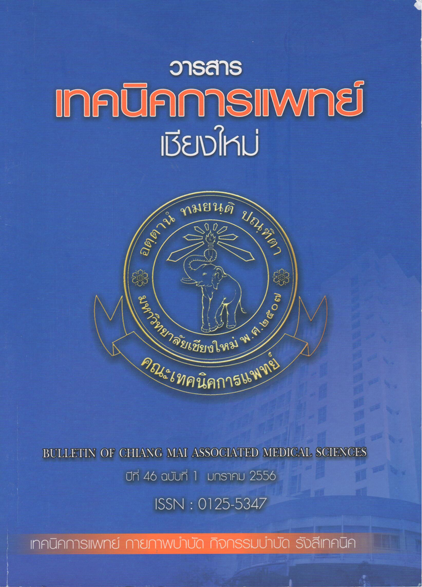Comparison of resting scapular position and range of combined shoulder elevation between junior swimmer players with and without shoulder pain
Main Article Content
Abstract
Objective: The present study was aimed to compare the resting scapular position, combined range of shoulder elevation, and pectoralis minor length in the junior swimmers with and without shoulder pain.
Methods: Thirty-nine swimmers in both gender aged 13-20 years participated in this study. The primary parameters were Superior Kibler (SK), Inferior Kibler (IK), Scapular Index (SI), Muscle length of pectoralis minor (PMi), and the combined range of shoulder elevation (CSE). Comparisons were made a) between the bilateral shoulder pain and control group and b) between shoulders within the unilateral shoulder pain group.
Results: When compared between the bilateral and control group, the mean values of SK (6.04±1.19 cm. vs. 5.94±0.97 cm.), IK (7.82±1.31 cm. vs. 7.67±1.38 cm.), PMi (3.97±1.27 cm. vs. 3.94±1.25 cm.), and CSE (-0.99±6.80 vs. - 4.02±7.88) were not significantly different. However, the mean value of SI of the bilateral shoulder pain group (53.83±6.58 cm.) was significantly less (p<0.05) than that of the control group (56.83±5.4 cm). When compared within the unilateral shoulder pain group, there was no statistically significant noted in these parameters.
Conclusion: The present study demonstrated that the SI which could inform the forward scapular posture was the best parameter to differentiate swimmers with and without shoulder pain. Bull Chiang Mai Assoc Med Sci 2013; 46(1): 49-58
Article Details
Personal views expressed by the contributors in their articles are not necessarily those of the Journal of Associated Medical Sciences, Faculty of Associated Medical Sciences, Chiang Mai University.


